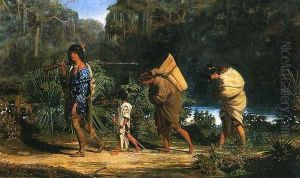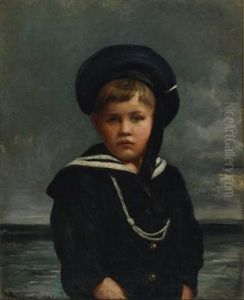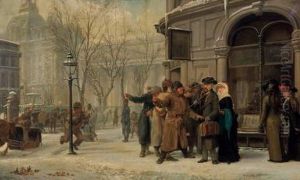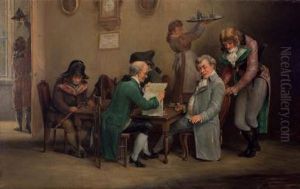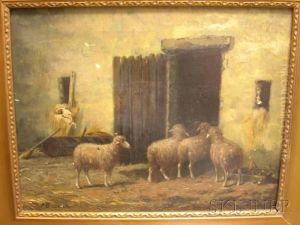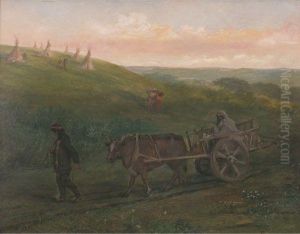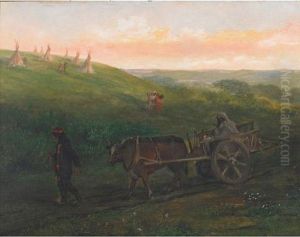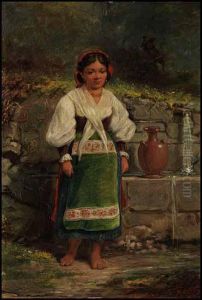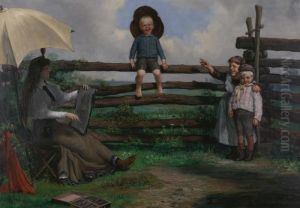Alfred Boisseau Paintings
Alfred Boisseau was a 19th-century French-born artist known for his work as a painter, photographer, and teacher, particularly in the context of North American landscapes and Native American subjects. Born in Paris, France, in 1823, Boisseau was exposed to the world of art at a young age. He studied at the prestigious École des Beaux-Arts in Paris, which was the leading art school in France, and honed his skills under the tutelage of well-known artists of the time.
In the early 1850s, Boisseau immigrated to the United States, where he continued to develop his artistic career. He initially settled in New Orleans, Louisiana, where he worked as a portrait painter and photographer. This period was significant for Boisseau as he began to establish his reputation in the New World. His portraits from this time often depicted prominent local figures, reflecting the social and cultural milieu of the American South before the Civil War.
Later, Boisseau moved to Canada and then to the Midwest of the United States. His travels provided him with new subject matter, particularly the opportunity to paint Native American peoples and the landscapes of the American frontier. Boisseau's work during this period is characterized by a romanticized view of the West, a common sentiment among artists and writers of the time who were fascinated by the idea of the 'vanishing' Native American culture and the untamed beauty of the American landscape.
Boisseau's paintings of Native Americans and the Western frontier are notable for their detailed rendering and sensitivity to the subject matter. His works are considered important for their historical value, capturing the likeness and spirit of a time and place that were undergoing rapid change due to westward expansion and settlement.
Alfred Boisseau's career also included teaching art, which he did in various locations, including at the Cleveland Academy of Art in Ohio. Through his teaching, he influenced a generation of artists and imparted the academic techniques he had learned in Paris. His impact as a teacher extended beyond his lifetime, contributing to the development of the American art scene during the latter half of the 19th century.
Boisseau's artistic legacy is preserved in various collections and museums. Despite not being as widely recognized as some of his contemporaries, his work provides valuable insights into the cultural and historical context of the era in which he lived and worked.
Alfred Boisseau passed away in 1901. His life and work spanned two continents and captured the spirit of an age marked by exploration, expansion, and the intersection of diverse cultures. His contributions to the art world, particularly his depictions of Native Americans and the Western United States, continue to be appreciated by art historians and enthusiasts alike.
